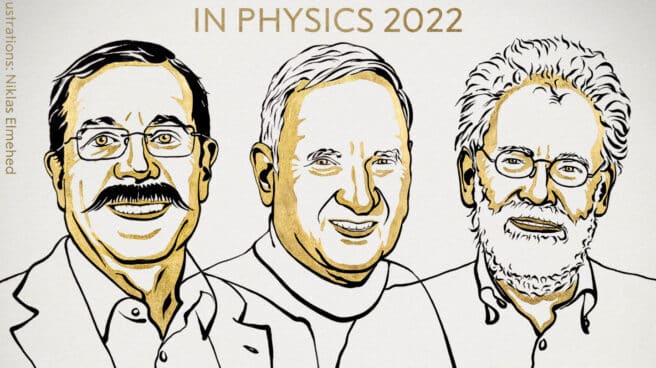

Awarded the 2022 Nobel Prize in Physics.
The trio of Frenchman Alain Aspect, American John F. Clauser and Austrian Anton Zeilinger have been awarded the 2022 Nobel Prize in Physics by the Royal Swedish Academy.
As stated in the ruling, these physicists have conducted groundbreaking experiments using entangled quantum states, in which two particles behave as one even when they are separated. “The results paved the way for new technologies based on quantum information,” explains the jury.
The unspeakable effects of quantum mechanics are beginning to find applications. There is now a large field of research including quantum computers, quantum networks and secure communication with quantum encryption, the Swedish Academy said in a statement.
A key factor in this development is how quantum mechanics allows two or more particles to exist in a so-called entangled state. What happens to one of the particles in an entangled pair determines what happens to the other particle, even if they are far apart.
For a long time, the question was whether the correlation was due to the fact that the particles in the entangled pair contained hidden variables, instructions that told them what result to give in the experiment.
In the 1960s, John Stuart Bell developed the mathematical inequality named after him. This suggests that in the presence of latent variables, the correlation between the results of a large number of measurements will never exceed a certain value. However, quantum mechanics predicts that a certain type of experiment will violate Bell’s inequality, resulting in a stronger correlation than would otherwise be possible.
John Clauser developed the ideas of John Bell, which led to a practical experiment. When he took the measurements, they confirmed quantum mechanics, clearly violating Bell’s inequality. This means that quantum mechanics cannot be replaced by a theory that uses hidden variables.
Some loopholes remained after John Clauser’s experiment. Alain Aspect of the University of Paris-Saclay designed the setup, using it in a way that closes an important loophole. He was able to change the measurement settings after the interlaced pair left its source, so the settings that existed when they were output could not affect the result.
Using improved tools and a long series of experiments, Anton Zeilinger at the University of Vienna started using entangled quantum states. Among other things, his research group has demonstrated a phenomenon called quantum teleportation, which allows a quantum state to be moved from one particle to another over a distance.
“It is becoming increasingly clear that a new type of quantum technology is emerging. We see that the work of the entangled state laureates is of great importance, even beyond the fundamental questions of the interpretation of quantum mechanics,” says Anders Irbeck, chairman of the Nobel Committee for Physics.
Source: El Independiente